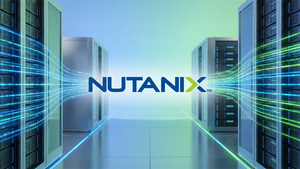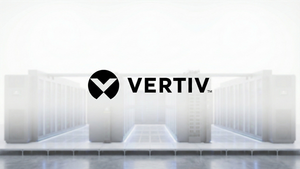
The global stock market, as of October 2025, is in the throes of an AI-fueled revolution, with unprecedented investor enthusiasm driving valuations of artificial intelligence companies to dizzying heights. While the transformative potential of AI is undeniable, a growing chorus of financial experts and institutions are sounding alarms, drawing stark parallels to past speculative bubbles and warning of a potential market correction. This dichotomy of boundless optimism and cautious apprehension defines the current landscape, as investors grapple with the promise of future innovation against the reality of current earnings.
This pervasive sense of exuberance has propelled major indices to record highs, with AI widely seen as the preeminent growth driver. However, the rapid ascent and stretched valuations, particularly among AI-focused technology companies, have led to increasing concerns that the market may be experiencing a "toxic calm before the crash," reminiscent of the dot-com era. The core debate revolves around whether current investments are truly underpinned by tangible returns or if speculative fervor has outpaced fundamental value.
The AI Gold Rush: A Timeline of Unprecedented Growth and Mounting Concerns
The current AI-driven market phenomenon has been building for several years, but the acceleration in investment and valuation has become particularly pronounced in 2024 and 2025. This period has seen massive capital expenditure from tech giants, fueling a surge in valuations for companies at the forefront of AI infrastructure and development.
Key events and observations leading up to this moment include:
- Early 2020s: Significant advancements in deep learning and neural networks lay the groundwork for more sophisticated AI applications.
- Late 2022 - Early 2023: The public release of advanced generative AI models, such as OpenAI's ChatGPT, captures global attention, showcasing the technology's impressive capabilities and sparking widespread interest.
- 2023: Investment in AI startups and established tech companies with AI initiatives begins to accelerate dramatically. The "Magnificent Seven" tech stocks – (NASDAQ: AAPL), (NASDAQ: MSFT), (NASDAQ: GOOGL), (NASDAQ: AMZN), (NASDAQ: NVDA), (NASDAQ: META), and (NASDAQ: TSLA) – emerge as primary drivers of market growth, heavily leveraging AI in their strategies.
- October 2024: OpenAI, a privately held AI research and deployment company, sees its valuation soar to $157 billion. Anthropic, another leading AI safety and research company, also experiences a significant valuation increase.
- Early 2025: The momentum continues, with OpenAI's valuation reaching an astounding $500 billion, and Anthropic's valuation nearly trebling to $170 billion. These figures, for companies that are still relatively young and, in some cases, not yet significantly profitable, underscore the speculative nature of the market.
- August 2025: Research from the Massachusetts Institute of Technology (MIT) indicates that a staggering 95% of organizations are getting zero return from their generative AI investments. This study highlights a critical disconnect between the hype and the tangible impact on corporate bottom lines, fueling concerns that market valuations could tumble if investor expectations are not met.
- October 2025 (Current Date): The Bank of England's Financial Policy Committee (FPC) issues a stern warning of an increased risk of a "sharp market correction," specifically citing "stretched" equity market valuations for AI-focused technology companies. JPMorgan (NYSE: JPM) CEO Jamie Dimon echoes these sentiments, noting elevated asset prices as a "category of concern." The International Monetary Fund (IMF) and Bank of America (NYSE: BAC) also join the chorus of warnings, with BofA's October Global Fund Manager Survey identifying an "AI equity bubble" as the top global tail risk for the first time ever.
Initial market reactions to these warnings have been mixed. While some investors have begun to exercise caution, leading to minor corrections in certain highly valued AI stocks, the overall market continues to exhibit strong bullish tendencies, driven by a powerful "fear of missing out" (FOMO) mentality. The allure of revolutionary productivity gains and the potential for AI to transform industries globally continue to outweigh the growing trepidation for many. The concentration of market capitalization in a few dominant AI-heavy tech giants also poses a systemic risk, where a downturn in these companies could have ripple effects across the entire market.
The Winners and Losers in the AI Revolution
The AI revolution is creating a clear divide in the market, distinguishing companies that are strategically positioned to capitalize on this technological shift from those that may struggle to adapt or even face obsolescence.
The Potential Winners:
- Semiconductor Manufacturers: Companies like (NASDAQ: NVDA), (NASDAQ: AMD), and (INTC: INTC) are at the forefront, providing the essential hardware (GPUs, CPUs, AI accelerators) required to train and run complex AI models. Their revenues and stock prices have surged as demand for high-performance computing components skyrockets. Nvidia, in particular, has become a bellwether for the AI boom, with its chips being indispensable for current AI development.
- Cloud Computing Providers: Tech giants such as (NASDAQ: MSFT) with Azure, (NASDAQ: AMZN) with AWS, and (NASDAQ: GOOGL) with Google Cloud are significant beneficiaries. They provide the scalable infrastructure and platforms necessary for businesses to develop, deploy, and manage AI applications, often integrating proprietary AI services directly into their offerings. Their substantial capital expenditures in data centers and AI hardware underscore their commitment and expected returns in this space.
- AI Software and Platform Developers: Companies creating foundational AI models, development tools, and industry-specific AI solutions stand to gain immensely. While many are privately held (like OpenAI and Anthropic), public companies integrating advanced AI into their software suites, such as (NASDAQ: MSFT) with Copilot or (CRM: CRM) with Einstein, are seeing enhanced product value and customer adoption.
- Data Providers and Management Companies: AI models are ravenous for data. Companies specializing in data collection, labeling, storage, and analytics will be crucial enablers of AI development.
- Automation and Robotics Companies: As AI becomes more sophisticated, its integration with physical systems will drive demand for automation solutions in manufacturing, logistics, and other sectors.
The Potential Losers (or those facing significant challenges):
- Companies with Outdated Business Models: Industries reliant on repetitive, manual tasks or traditional analytical methods face disruption. Companies unwilling or unable to integrate AI into their operations risk falling behind in efficiency, innovation, and customer experience.
- Companies Lacking AI Strategy or Talent: Businesses that fail to develop a coherent AI strategy or cannot attract and retain skilled AI talent will struggle to compete. The cost of developing and implementing AI can also be prohibitive for smaller players.
- "Legacy" Software Providers: Firms offering software solutions that are not adaptable to AI integration or do not offer AI-enhanced features may see their market share erode as customers migrate to more advanced, AI-powered alternatives.
- Companies with Undifferentiated Products/Services: If AI can automate or significantly improve a core product or service, companies that offer similar but non-AI-enhanced versions will face immense pressure. For example, simple content creation or basic data analysis services could be heavily impacted by generative AI tools.
- Certain Labor-Intensive Industries: While AI is expected to create new jobs, it will also automate many existing ones, particularly in administrative tasks, customer service, and certain analytical roles. Companies heavily reliant on these types of labor may face significant restructuring challenges.
The impact on these companies is not always black and white. Many traditional companies are actively investing in AI, aiming to transform their operations and offerings. However, the speed of change and the capital intensity of AI development mean that only those with clear vision, substantial resources, and agile execution will truly thrive. The current market is heavily favoring those perceived as "pure-play" AI companies or foundational enablers, often overlooking the practical challenges and long integration timelines for broader enterprise adoption.
Broader Implications and Historical Echoes of the AI Boom
The current AI-driven market phenomenon is not merely a sectoral surge; it represents a profound technological shift with wider implications across industries, regulatory landscapes, and historical economic cycles. Understanding these broader contexts is crucial for assessing its long-term impact.
This event fits squarely into broader industry trends emphasizing digital transformation, data-driven decision-making, and automation. AI is seen as the ultimate accelerant for these trends, promising unprecedented gains in productivity and efficiency. However, it also introduces new complexities. For instance, the concentration of AI development and infrastructure in the hands of a few tech behemoths (the "Magnificent Seven") raises concerns about market power, potential monopolies, and the stifling of smaller innovators. This ripple effect extends to partners and competitors alike; companies that align with leading AI providers may gain a competitive edge, while those attempting to build independent, competing AI infrastructures face immense cost and talent barriers.
Regulatory and policy implications are rapidly emerging. Governments worldwide are grappling with how to govern AI, addressing concerns such as data privacy, algorithmic bias, intellectual property rights, and the ethical use of autonomous systems. Discussions around AI-specific legislation, similar to GDPR for data privacy, are underway, and potential regulations could significantly impact the development and deployment costs for AI companies. Furthermore, the national security implications of advanced AI are prompting increased scrutiny and potential export controls on critical AI technologies and hardware.
Historically, the current AI boom draws striking comparisons to the dot-com bubble of the late 1990s. Similarities include:
- Exuberant Valuations: Companies with nascent technologies and limited profitability achieving astronomical market capitalizations based on future potential. The median Price-to-Sales (P/S) ratios for some AI-focused companies, around 25, now exceed the dot-com era's peak of 18.
- Speculative Investment: A rush of investment driven by "fear of missing out" (FOMO), leading to capital flowing into early-stage companies with little more than a demo or a compelling vision.
- Concentration of Wealth: A significant portion of market gains concentrated in a few dominant tech players, much like the "Nifty Fifty" or the early internet giants.
- Disruptive Technology Hype: A widespread belief that the technology will fundamentally change every aspect of life, leading to inflated expectations.
However, there are also crucial differences. Proponents argue that today's AI boom is underpinned by more tangible fundamentals. Unlike many dot-com companies that lacked clear business models, today's AI leaders often have established revenue streams from their core businesses (e.g., cloud services, hardware sales) and are investing heavily in AI as an extension of these profitable ventures. The sheer scale of capital expenditure by companies like (NASDAQ: MSFT), (NASDAQ: GOOGL), and (NASDAQ: AMZN) in AI infrastructure suggests a more robust foundation than the speculative ventures of the late 90s. Nevertheless, the MIT research indicating that 95% of organizations are getting zero return from their generative AI investments remains a stark reminder of the potential for a disconnect between investment and practical, measurable outcomes, echoing the challenges faced by many internet companies that struggled to monetize their early web presences.
The Road Ahead: Navigating AI's Uncharted Market Territory
The trajectory of AI's impact on the stock market is poised for significant developments in both the short and long term, presenting a complex mix of opportunities and challenges for investors, businesses, and policymakers.
In the short term, the market will likely remain highly sensitive to earnings reports from the "Magnificent Seven" and other key AI enablers. Upcoming Q3 earnings reports are seen as critical catalysts, potentially determining whether the current pace of AI infrastructure spending is sustainable or if it has reached a temporary limit. Any signs of slowing growth or unfulfilled expectations from these market leaders could trigger profit-taking and a broader market correction. Conversely, strong results could further fuel the rally, albeit with increasing concerns about overheating. We may also see continued volatility as investors attempt to differentiate between genuinely transformative AI companies and those merely riding the hype wave. Geopolitical developments, particularly concerning the supply chain for critical AI components like advanced semiconductors, could also introduce short-term disruptions.
Long-term possibilities for AI are vast and could lead to profound economic restructuring. AI is expected to drive significant productivity gains across industries, leading to new business models, enhanced efficiency, and the creation of entirely new markets. This will necessitate strategic pivots for many companies, requiring deep integration of AI into their core operations, significant investment in talent development, and a willingness to embrace continuous innovation. Companies that successfully adapt will likely see sustained growth and competitive advantages. However, the long-term also carries the risk of increased automation leading to job displacement in certain sectors, requiring societal adjustments and new policy frameworks.
Emerging market opportunities will include specialized AI applications in niche industries (e.g., AI for drug discovery, personalized education, climate modeling), the development of ethical AI frameworks and tools, and new forms of human-AI collaboration. Challenges will include managing the immense energy consumption of AI infrastructure, addressing data privacy and security concerns, and ensuring equitable access to AI technologies to prevent a widening of economic disparities.
Potential scenarios and outcomes range from a "soft landing" where AI adoption gradually translates into tangible economic growth without a major market crash, to a more severe "bubble burst" akin to the dot-com era, where overvalued companies see sharp declines, followed by a period of consolidation and more realistic growth. Another scenario involves a "two-speed market," where a handful of truly innovative and profitable AI companies continue to thrive, while the majority of speculative ventures falter. The ultimate outcome will depend on a confluence of technological advancements, corporate execution, regulatory responses, and broader macroeconomic conditions.
Navigating the AI Frontier: Key Takeaways and Future Watchpoints
The current state of the stock market, heavily influenced by the rise of artificial intelligence, presents a complex and dynamic landscape. The overwhelming enthusiasm for AI's transformative potential is undeniable, driving unprecedented valuations and market highs. However, this euphoria is increasingly tempered by legitimate concerns about a potential bubble, stretched valuations, and a disconnect between speculative investment and tangible returns.
The key takeaway from this period is the dual nature of the AI revolution: immense opportunity coupled with significant risk. While AI promises to reshape industries, boost productivity, and create new economic value, the market's current pricing of this future potential may be overly optimistic. The comparisons to the dot-com bubble serve as a potent reminder of how quickly investor sentiment can shift when expectations diverge from reality. The concentration of market gains in a few dominant tech companies also highlights a systemic vulnerability.
Moving forward, investors should exercise caution and diligence. A healthy market correction, if it occurs, could serve as a "healthy reset," redirecting investment toward companies with solid fundamentals, clear business models, and demonstrable returns on their AI investments. It's crucial to differentiate between companies that are genuinely integrating AI for operational efficiency and new product development versus those merely attaching "AI" to their narratives for speculative gains.
What investors should watch for in the coming months includes:
- Earnings Reports: Pay close attention to the financial results of major AI players, particularly the "Magnificent Seven." Scrutinize their capital expenditures on AI, revenue growth attributed to AI, and, crucially, their profitability and return on AI investments.
- Tangible ROI: Look for concrete evidence that AI investments are translating into measurable improvements in efficiency, cost reduction, or new revenue streams for businesses, rather than just abstract promises.
- Regulatory Developments: Monitor global regulatory bodies for new policies concerning AI ethics, data governance, competition, and intellectual property. These could significantly impact the operational landscape and cost structures for AI companies.
- Technological Milestones: Keep an eye on genuine breakthroughs in AI capabilities that open up new markets or solve previously intractable problems, as opposed to incremental improvements or hype.
- Market Breadth: Observe whether the AI rally broadens beyond a few mega-cap tech stocks to include a wider range of companies demonstrating sustainable AI-driven growth. A narrow market rally is often a sign of speculative concentration.
In conclusion, the AI era is here, and its long-term impact will undoubtedly be profound. However, the current market environment demands a nuanced approach, balancing optimism with a healthy dose of skepticism. The lasting impact of this period will be determined not just by the technological advancements themselves, but by the market's ability to accurately value and integrate these innovations into a sustainable economic framework.
This content is intended for informational purposes only and is not financial advice





